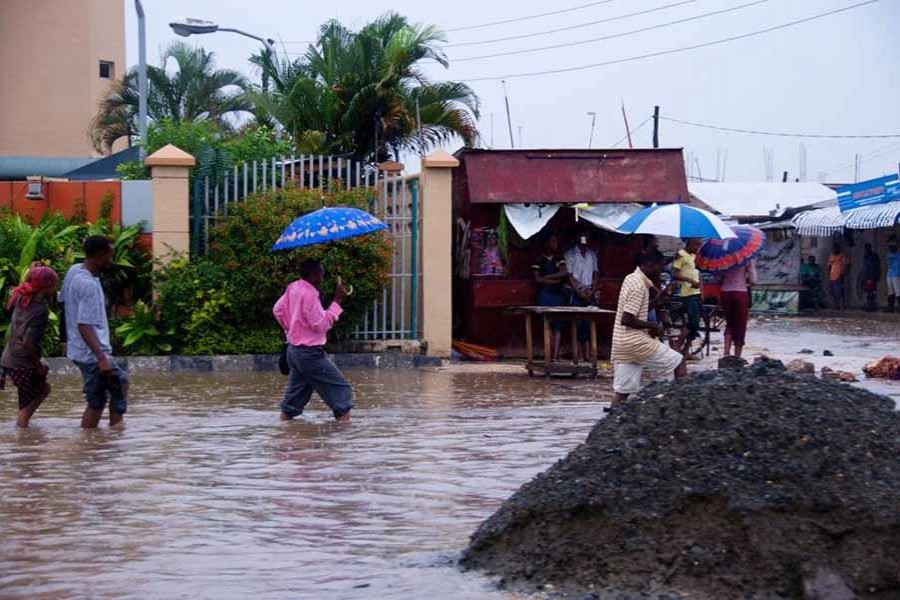
Published :
Updated :

It is indeed unfortunate when the nation is kept in the dark as to future preparedness against natural disasters. It has happened in case of last year's catastrophic flash floods in haor (wetlands) areas of the country. Flash floods are a usual phenomenon that occurs due to onrush of waters from the upstream as well as unusually heavy rainfall. But the authorities appeared to be completely taken aback as early flash flood hit Sunamganj, Kishoreganj, Netrakona and other haor areas due to onrush of waters from Indian hills.
As a result, Bangladesh suffered a huge loss of Boro crops. Boro is the biggest of the country's three rice seasons, the other two seasons being Aus and Aman. Following the first strike of flash flood in Sunamganj and a few other adjoining haor districts, the Department of Agricultural Extension (DAE) estimated a crop loss of 6,00,000 tonnes, with Boro on 2,00,000 hectares gone under water. The DAE, however, later reassessed the Boro losses as reports on new areas being submerged after haor embankments gave way to flash floods continued to come.
Then again there was an unusually early flash flood which struck the northeastern regions later. Official sources had said Boro output would be some 4,50,000 tonnes less than the 19.1 million tonnes production target. The production loss in Boro came at a time when public granaries were having one of the lowest stocks of food grains in six years. Total food grain stocks stood at 5,46,000 tonnes, the lowest since the fiscal 2009-10, according to data from the food ministry. A United States Department of Agriculture (USDA) report noted that Bangladesh's rice stock in the public food distribution system got nearly halved.
In fact, the wetlands of the Surma basin play two crucial functions: they serve as the granaries and fisheries of the northeast. The farmers of the wetlands depend on a single crop -- the Boro. The rice farmers plant when the water recedes in the winter, and harvest before the monsoon waters come. Because of the silt deposited by the floods, the land is extraordinarily fertile. "Any artificial alteration of the 'flood pulse' could affect food security and bring disaster to the region. A 110 per cent increase in dry season flow would more than double the water in the Surma and Kushiara in winter. This would mean the wetlands would not be drained, and consequently there would be no Boro", said an expert.
Prof AKM Sailful Islam of the Institute of Water and Flood Management at the Bangladesh University of Engineering and Technology (Buet) says when the water level of the Surma river at Sunamganj station of Bangladesh Water Development Board (WDB) crosses the 6.5 metre-mark during March-April, they consider it as the beginning of flash flood. The intensity and frequency of extreme weather has been changing also due to climate change, he said.
The department of meteorology or Flood Forecasting Warning System doesn't have any special warning system for flash flood. Samarendra Karmakar, a meteorologist and an ex-director of Bangladesh met office, also pointed to climate variability for last year's early flash flood. "Last year flash flood took place earlier than usual. But nobody can exactly say why this climate variability happens."
It is now time for Bangladesh to be fully prepared to face 2017-like flash floods. The policymakers should remember that such disasters create temporary food shortages.


 For all latest news, follow The Financial Express Google News channel.
For all latest news, follow The Financial Express Google News channel.